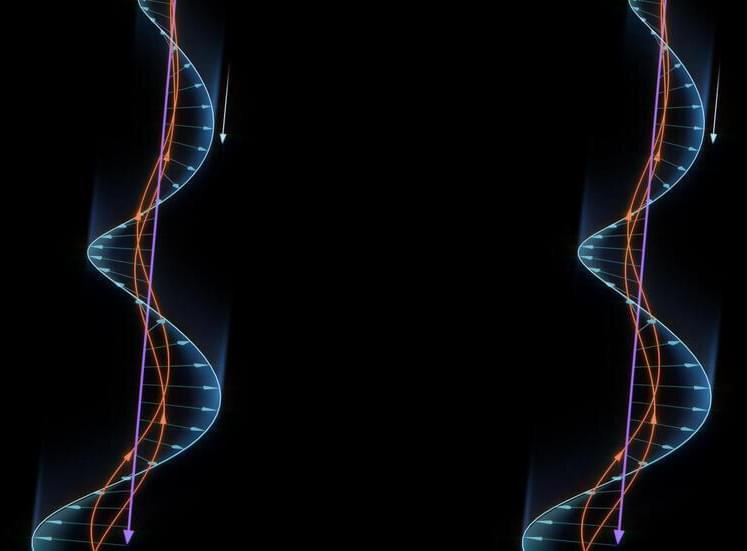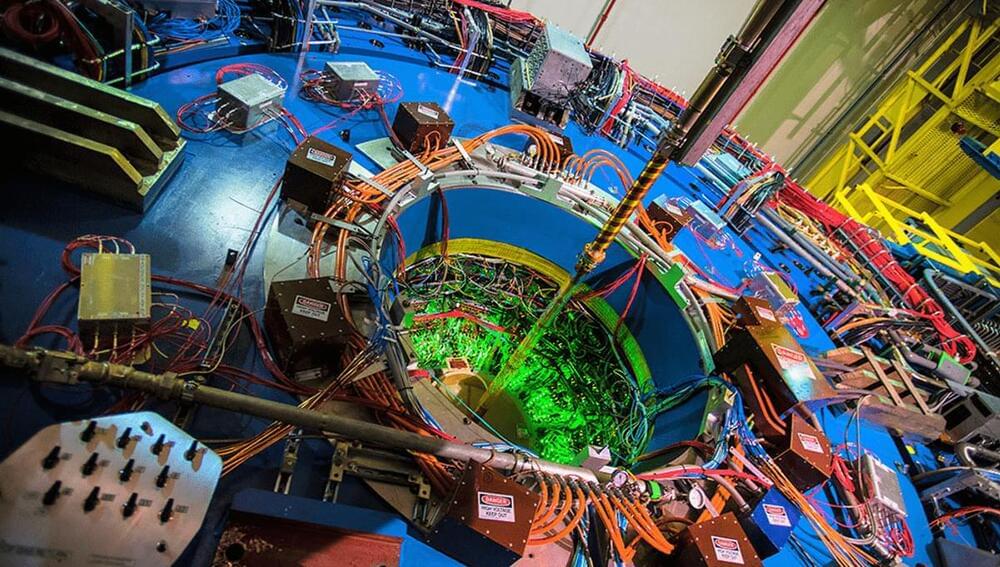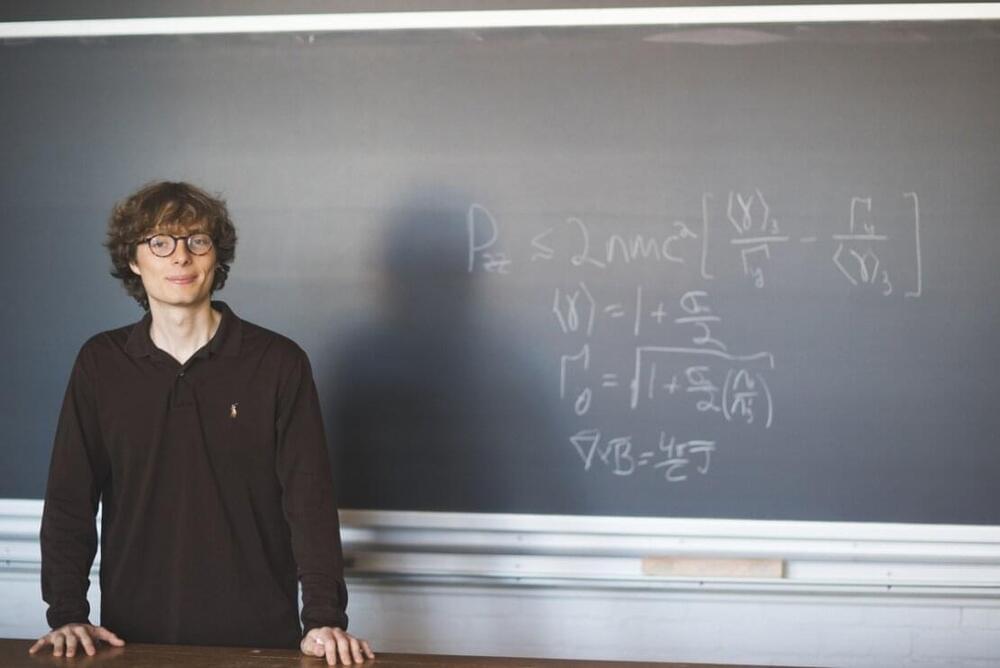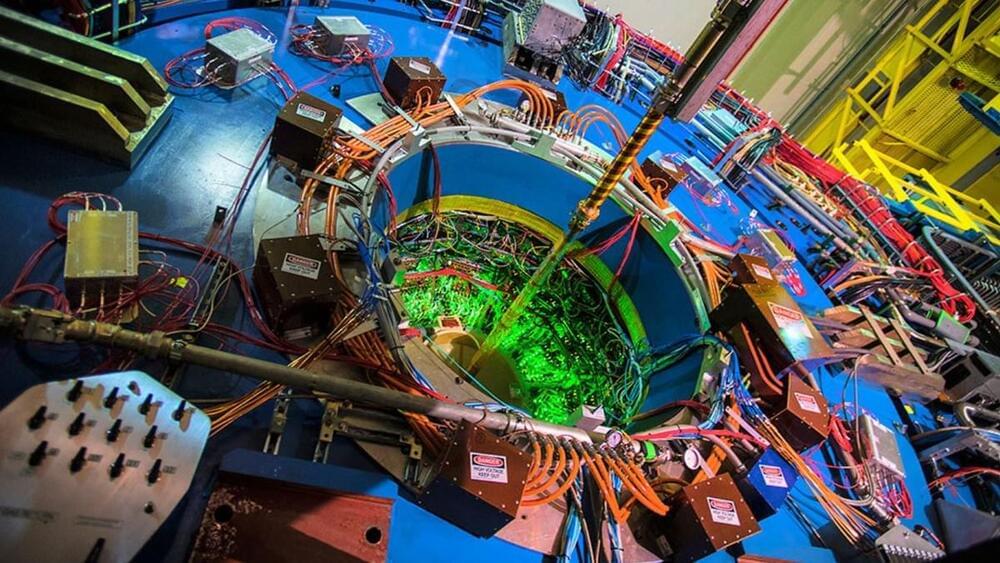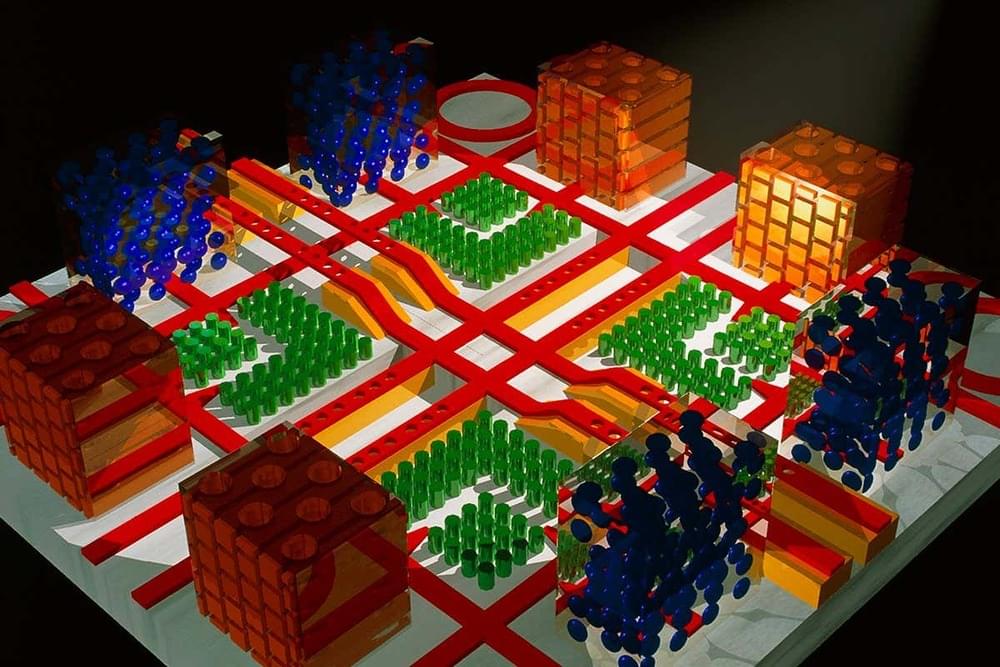Archive for the ‘particle physics’ category: Page 210
Jan 8, 2023
How these factors could lead to better nanomedicine treatments
Posted by Gemechu Taye in categories: biological, biotech/medical, particle physics
Better treatments are definitely on the way.
Nanomedicines took the spotlight during the COVID-19 pandemic. Researchers are using these very small and intricate materials to develop diagnostic tests and treatments. Nanomedicine is already used for various diseases, such as the COVID-19 vaccines and therapies for cardiovascular disease. The “nano” refers to the use of particles that are only a few hundred nanometers in size, which is significantly smaller than the width of a human hair.
NIH Image Gallery/Flickr.
Continue reading “How these factors could lead to better nanomedicine treatments” »
Jan 7, 2023
Physicists confirm effective wave growth theory in space
Posted by Dan Breeden in categories: particle physics, satellites
A team from Nagoya University in Japan has observed, for the first time, the energy transferring from resonant electrons to whistler-mode waves in space. Their findings offer direct evidence of previously theorized efficient growth, as predicted by the non-linear growth theory of waves. This should improve our understanding of not only space plasma physics but also space weather, a phenomenon that affects satellites.
When people imagine outer space, they often envision it as a perfect vacuum. In fact, this impression is wrong because the vacuum is filled with charged particles. In the depths of space, the density of charged particles becomes so low that they rarely collide with each other.
Instead of collisions, the forces related to the electric and magnetic fields filling space, control the motion of charged particles. This lack of collisions occurs throughout space, except for very near to celestial objects, such as stars, moons, or planets. In these cases, the charged particles are no longer traveling through the vacuum of space but instead through a medium where they can strike other particles.
Jan 7, 2023
First Quantum Entanglement Between Dissimilar Particles Provides A View Inside Atomic Nuclei
Posted by Dan Breeden in categories: particle physics, quantum physics
Positively and negatively charged versions of the same particle have been entangled for the first time, allowing us to map the hearts of atoms more precisely and opening the doors to more powerful communication tools.
The neutrons and protons that make up the nuclei of atoms are, in turn, composed of quarks. However, quarks alone would be unstable; they need gluons, the carriers of the strong force, to hold them together. Gluons are orders of magnitude too small to see, even with the most powerful microscopes – but they can still interact with photons to produce exceptionally short-lived rho particles that decay to charged two-quark particles called pions.
By measuring the angles and speed at which the positive and negative pions (π+ and π-) emerge, scientists at the Brookhaven National Laboratory have created a map of gluon distribution within the nuclei of gold and uranium atoms. They report this map to be the most precise description of the inner workings of an atomic nucleus.
Jan 7, 2023
TRANSFORMERS: The Future Is Here With This Robotics Tech | New AI For Quantum Computers
Posted by Dan Breeden in categories: particle physics, quantum physics, robotics/AI
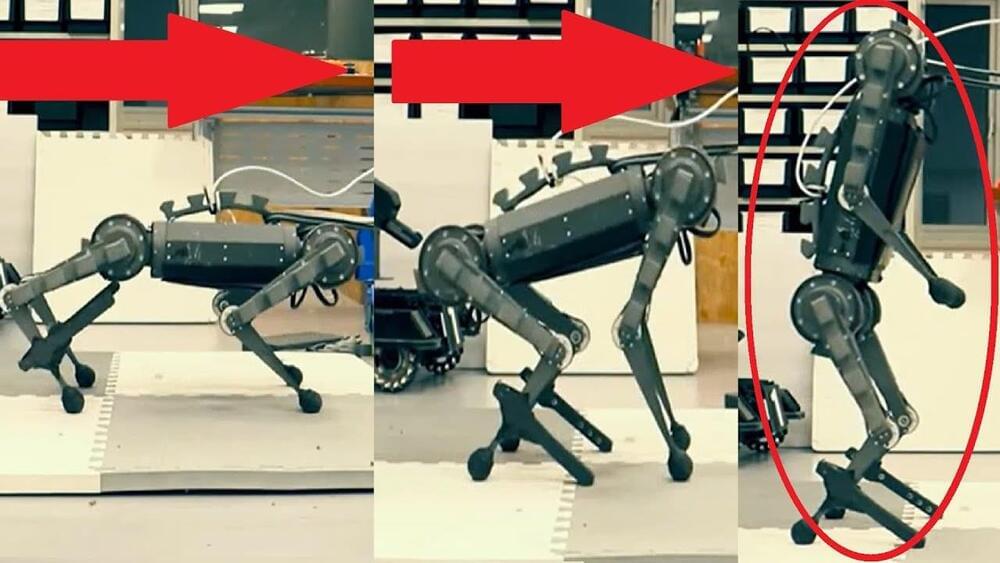
Deep Learning AI Specialization: https://imp.i384100.net/GET-STARTED
AI researchers aim to achieve stability, speed, manipulability and a gain in operational height from for the robot by using machine learning and a 3D printed stick on the robot’s hind legs to allow quadruped transformers to become a humanoid biped robot and walk. Quantum researchers designed a machine learning-based method that shows how artificial controllers can discover non-intuitive pulse sequences that can rapidly cool a mechanical object from high to ultra cold temperatures, faster than other standard methods, which could be used to advance quantum computers. Researchers used deep reinforcement learning to arrange atoms into a lattice shape, which could be used to create new materials and nano devices, including a robot arm mate of atoms.
AI News Timestamps:
0:00 Transformers Robotics Tech.
2:39 Artificial Intelligence To Control Quantum Computer.
5:21 New Nano Scale Robot Arm.
#technology #tech #ai
Jan 6, 2023
Yes, the Universe really is 100% reductionist in nature
Posted by Dan Breeden in categories: computing, particle physics, space
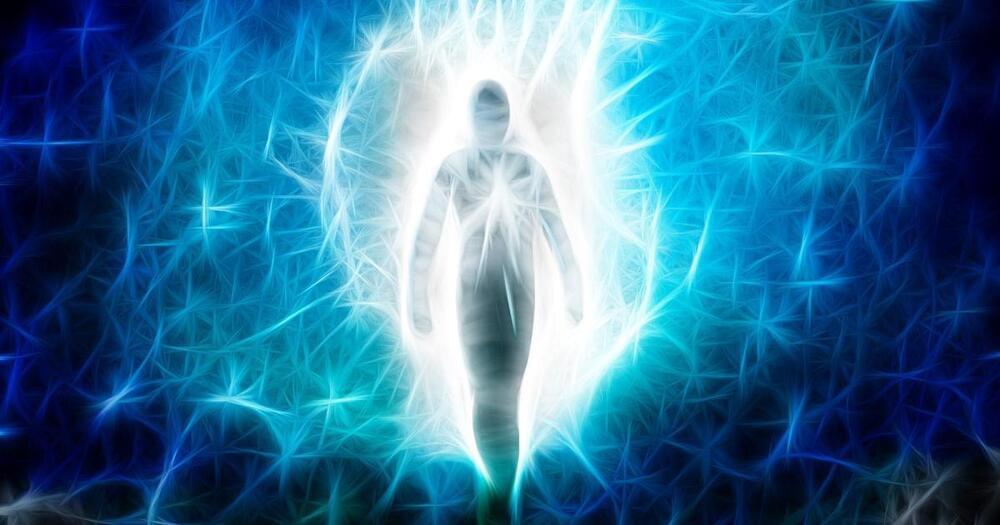
In other words, what appears to be emergent to us today, with our present limitations of what its within our power to compute, may someday in the future be describable in purely reductionist terms. Many such systems that were once incapable of being described via reductionism have, with superior models (as far as what we choose to pay attention to) and the advent of improved computing power, now been successfully described in precisely a reductionist fashion. Many seemingly chaotic systems can, in fact, be predicted to whatever accuracy we arbitrarily choose, so long as enough computational resources are available.
Yes, we can’t rule out non-reductionism, but wherever we’ve been able to make robust predictions for what the fundamental laws of nature do imply for large-scale, complex structures, they’ve been in agreement with what we’ve been able to observe and measure. The combination of the known particles that make up the Universe and the four fundamental forces through which they interact has been sufficient to explain, from atomic to stellar scales and beyond, everything we’ve ever encountered in this Universe. The existence of systems that are too complex to predict with current technology is not an argument against reductionism.
Jan 6, 2023
Decoding mega magnetic explosions outside the solar system
Posted by Dan Breeden in categories: cosmology, particle physics
Neutron stars and black holes may be stellar corpses, but they are among the most active celestial objects. They produce some of the highest-energy radiation ever observed, and scientists have long puzzled over the physics that underlies the process powering their energetic emissions.
Now, in a recent paper published in Physical Review Letters, a Dartmouth physics major and an assistant professor have proposed a new theory that explains how magnetic energy can be very quickly released with explosive energy into charged particles in these extreme environments.
Similar magnetic explosions also occur closer to home, setting off solar flares and the Northern Lights. They can be observed wherever charged gases, called plasma, are found—even in a lab, says Matthew Goodbred ‘23, the paper’s lead author.
Jan 6, 2023
Closed timelike curve
Posted by Dan Breeden in categories: cosmology, information science, mathematics, particle physics
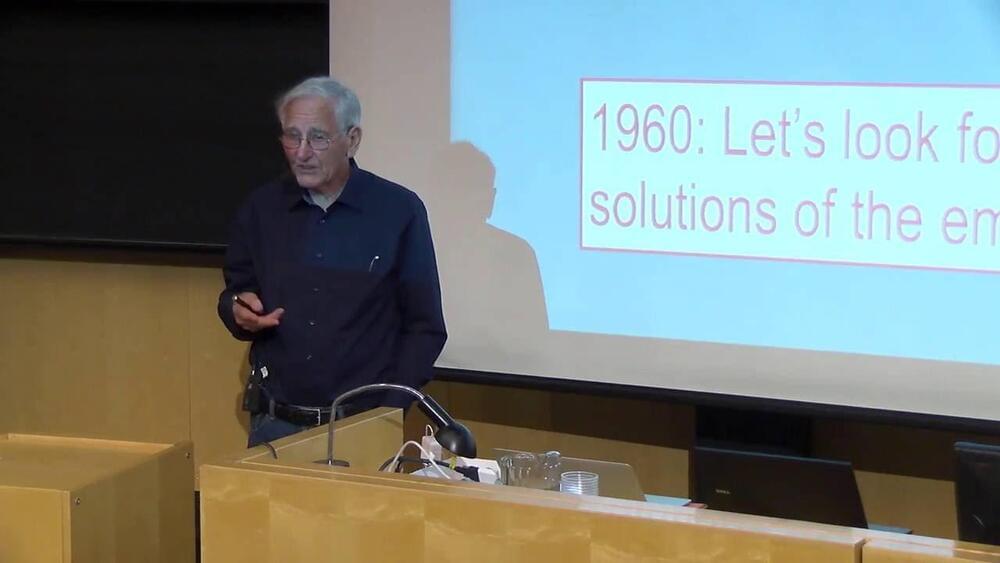
In mathematical physics, a closed timelike curve (CTC) is a world line in a Lorentzian manifold, of a material particle in spacetime, that is “closed”, returning to its starting point. This possibility was first discovered by Willem Jacob van Stockum in 1937[1] and later confirmed by Kurt Gödel in 1949,[2] who discovered a solution to the equations of general relativity (GR) allowing CTCs known as the Gödel metric; and since then other GR solutions containing CTCs have been found, such as the Tipler cylinder and traversable wormholes.
Jan 6, 2023
Government Scientists Discover Entirely New Kind of Quantum Entanglement in Breakthrough
Posted by Jose Ruben Rodriguez Fuentes in categories: computing, government, particle physics, quantum physics
Scientists at Brookhaven National Laboratory have uncovered an entirely new kind of quantum entanglement, a phenomenon that causes particles to become weirdly linked, even across vast cosmic distances, reports a new study. The discovery allowed them to capture an unprecedented glimpse of the bizarre world inside atoms, the tiny building blocks of matter.
The mind-bending research resolves a longstanding mystery about the nuclei of atoms, which contain particles called protons and neutrons, and could help shed light on topics ranging from quantum computing to astrophysics.
Jan 6, 2023
Crystal device could be used to build tiny particle accelerators
Posted by Paul Battista in categories: computing, particle physics
A chip-sized device can produce very intense light that could help in building tiny X-ray machines and particle accelerators.


